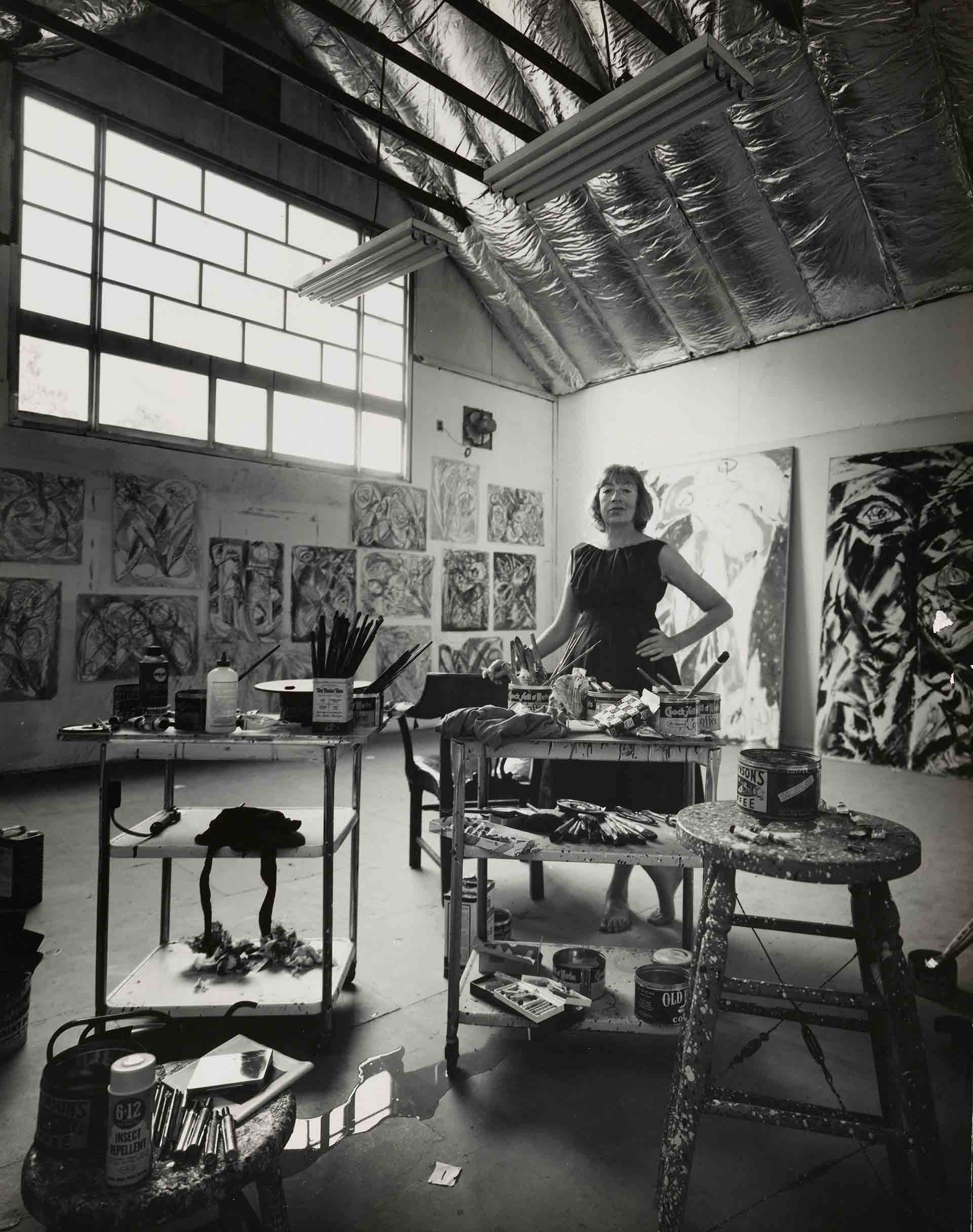
MORE THAN ONE LEE KRASNER
The In Focus project is designed to complement the exhibition Lee Krasner: Living Color as part of its Didaktika section, and captures the career of a tenacious artist who, from her beginnings in New York in the late 1920s, struggled to gain an artistic training, create work, and carve a niche for herself among the first generation of the American Abstract Expressionists.

MORE THAN ONE LEE KRASNER
Lee Krasner (Lena Krassner) was born in Brooklyn, New York, in 1908 to a humble family that hailed from a small village near Odessa in what is now modern-day Ukraine. They were forced into exile because of violent, anti-Semitic pogroms, emigrating to America in 1905. Krasner was born three years later. Her upbringing in an Orthodox Jewish household encouraged the traditional role assigned to women at the time.
TOWARDS INDEPENDENCE
In 1920 the 19th Amendment to the US Constitution granted American women the right to vote. Witnessing these monumental steps towards women’s liberation within American society had a huge impact on Krasner.
From a very young age, Krasner was determined to be an artist. At the age of 14 she applied to Washington Irving High, then the only school in New York to offer an art course for girls, and announced her rejection of religion. Her family did not support the decision but they also did not object to it.
A CLEAR OBJECTIVE
Pursuing her goal of becoming an artist, Krasner attended several art schools where she came face-to-face with the impediments that hindered women from accessing these studies at the time. In 1926, she enrolled at the Women’s Art School at the Cooper Union.
In 1937, after attending the National Academy of Design, which she found far too traditional, Krasner was drawn to the Hans Hofmann School of Fine Arts. Hofmann’s theories on Cubism and the use of form and color had a tremendous impact on her. Hofmann himself, astounded by her talent, claimed that her work was: “so good you would not know it was painted by a woman.” This was intended as a compliment but, understandably, was not received as such. It was clear that alongside the obstacles that anyone trying to find their way into the art world had to confront, Krasner had the added difficulty of being a woman.
DESPITE THE ADVERSITY
During the financial collapse following the 1929 stock market crash, which plunged America into a major depression, Krasner persisted with her painting despite the scarcity of money or materials. She was able to survive thanks to a variety of jobs, such as her projects in 1934 and 1941 for the Works Project Administration (WPA), a government program to counter widespread poverty and unemployment all over the country by employing some 10,000 artists and craftspeople to make murals and statues for schools, hospitals, and other public buildings.
When the WPA announced mass layoffs of artists, Krasner participated in several strikes and demonstrations. When arrested at one of these protests, she identified herself to the police as the celebrated painter Mary Cassatt.
THE MOST IMPORTANT THING IS PAINTING
In the 1940s, Krasner had a new challenge to face. She married fellow artist Jackson Pollock–a temperamental personality–and they moved to a home in Springs, Long Island.
Paradoxically, many art institutions and galleries that had initially been promoted by women dedicated very few exhibitions to the work of female artists. Krasner had her first gallery exhibition in 1951; she persisted in painting despite the economic and critical hardships of the time and the gradual deterioration of her relationship with Pollock.
THE LEGACY OF A NEW ROLE
A fatal car accident in 1956 caused Jackson Pollock’s premature death and left Krasner a widow at the age of 47. She found herself trying to balance her work as an artist with being the sole executor of her late husband’s estate, which would later combine to become the Pollock-Krasner Foundation.
After a period of mourning, Krasner returned to painting, once again proving her enormous resilience. In 1972 she joined the Women in the Arts group and participated in several demonstrations of museums alongside celebrated figures like Louise Bourgeois and Chryssa.
Photo:
Lee Krasner in her studio in the barn, Springs, 1962.
Image taken by Hans Namuth. Center for Creative Photography / The University of Arizona, -The Hans Namuth Archive-.
